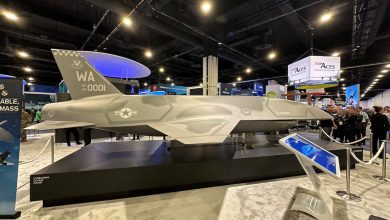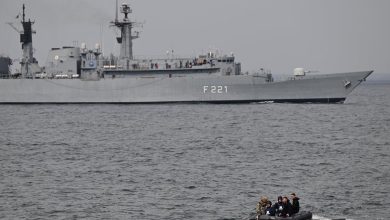In first, Australian exercise Pitch Black gets dedicated aircraft carrier

MELBOURNE, Australia — Air forces from around the world will descend on Australia’s remote Northern Territory this month for a combat exercise of unprecedented scale there.
The Pitch Black exercise is the latest in a biennial series that began 43 years ago as a unilateral drill, before becoming a joint Australia-U.S. training event in 1983. Since then it has grown in step with the increasing geopolitical importance of the Indo-Pacific region.
The three-week exercise will run July 12-Aug. 2. This year, Pitch Black will see 20 nations taking part. Of these, 16 are contributing combat jets to the exercise, which will see more than 140 aircraft and over 4,000 personnel participate.
The actively participating nations this year are Australia, France, Germany, India, Indonesia, Italy, Japan, Malaysia, Papua New Guinea, the Philippines, Singapore, South Korea, Spain, Thailand, the United Kingdom and the United States. In addition, Brunei, Canada, Fiji and New Zealand will have personnel embedded in the exercise.
Countries attending this series for the first time include Italy, Spain, Papua New Guinea and the Philippines. And in a first for the exercise itself, an aircraft carrier will dedicate its time to the event, in the form of the Italian Navy’s ITS Cavour.
European presence
A pan-European force made up of the French, German and Spanish air forces is deploying first to Alaska under an overarching deployment effort, dubbed Pacific Skies, before making its way into the Pacific. Under that umbrella operation, those nations will participate in the Alaska-based exercise Arctic Defender, then continue into the Pacific where they will join the Rim of the Pacific drills off Hawaii, the exercise Nippon Skies in Japan, Pitch Black in Australia, and Tarang Shakti drills in India.
The strong European presence in the Indo-Pacific comes amid regional tension, as noted in the Australian government’s National Defence Strategy released in April.
“Entrenched and increasing strategic competition between the United States (US) and China is a primary feature of our security environment,” the document stated. “It is being accompanied by an unprecedented conventional and non-conventional military build-up in our region, taking place without strategic reassurance or transparency.”
Commenting on the Pacific Skies deployment, the chief of staff of Germany’s air force, the Luftwaffe, said the goal is to increase operational capability, strengthen military cooperation with countries in the Indo-Pacific, and demonstrate air power and dedication to the region.
“By participating in Pacific Skies 24, we as Europeans are showing presence in a part of the world that is of great importance to us all,” Lt. Gen. Ingo Gerhartz said.
Air Commodore Pete Robinson, who commands the Royal Australian Air Force’s Air Combat Group and will lead Pitch Black, told Defense News the events are an opportunity for the country’s NATO partners “to validate true global reach and build interoperability in the region.”
“The quality of training we can provide down here and the air space we have, the weapons ranges we have, and the engagements we have forged across multiple nations is a shining example of how we build interoperability amongst our air forces — and more importantly it’s how we build our partnerships across countries,” Robinson added. “Exercise Pitch Black demonstrates the value of sustaining stability across the region.”
The goals are similar to those of Asian air forces, with a spokesperson for the Japan Air-Self Defense Force saying its participation will contribute to a “free and open” Indo-Pacific region.
“The purpose [of the Japan Air-Self Defense Force’s involvement) is to improve the tactical skills of participating units, enhance interoperability with the RAAF and U.S. forces, and deepen mutual understanding with the participating countries in [a] practical environment,” the spokesperson said.
Nigel Pittaway is the Australia correspondent for Defense News.







